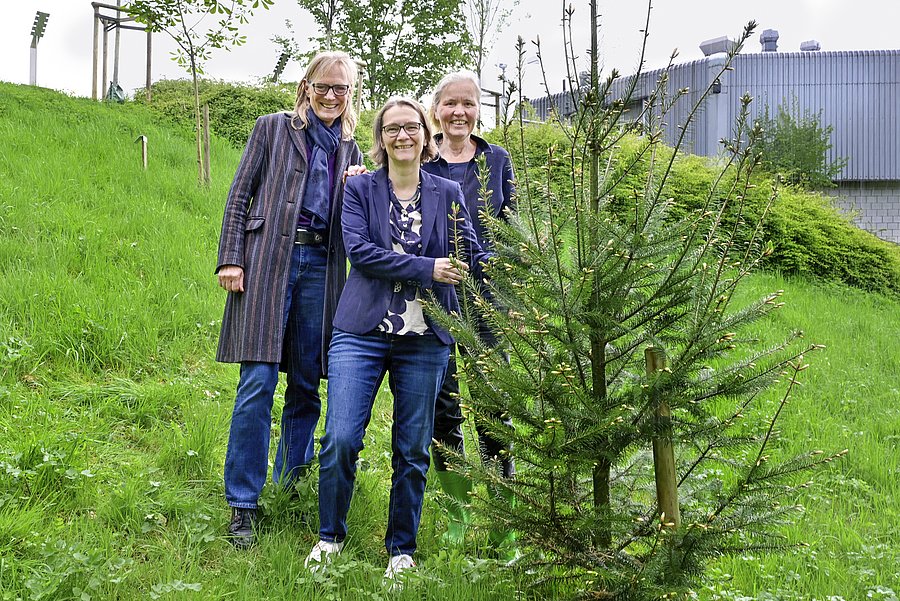Day of the tree
Appreciating and protecting biodiversity - two new tree sponsors for the university arboretum

From left: Rector Birgitta Wolff, Chancellor Ursula Löffler and founder of the university arboretum Gertrud Lohaus visit the sponsor Douglas fir. It is one of 102 different tree species on the Grifflenberg campus // Photo Michael Mutzberg
Buckeye and Douglas fir, which the Rector and Chancellor have chosen as part of their tree sponsorship programme. With this, they want to support the continued existence of the university arboretum, which is partly financed by donations.
Rector Birgitta Wolff: "The university arboretum is a successful example of the University of Wuppertal's commitment to biodiversity. We recently became a member of the international 'Nature Positive Universities' network in order to systematically take this idea further and promote nature conservation and environmental protection on the university campus in the long term."
Chancellor Ursula Löffler adds: "Due to the structure of our properties, we as a university have the opportunity to contribute to Wuppertal's biodiversity. The university arboretum epitomises this approach in a wonderful way."
And the university arboretum also fulfils these functions: biology students learn to identify woody plants in it, its (fruit) trees serve as an important source of food for insects and it is a barometer of how the weather and climate are developing.
A response to change: trees of the future
Trees are damaged by extreme heat and become susceptible to pests. In the university arboretum, trees with higher water requirements, such as black and grey alders, have died in past dry and hot summers.
"In these places, we have replanted other species, future tree species that are better suited to the urban climate, such as the silver lime or the tree hazel, mostly as young trees, to give them enough time to adapt to the changing conditions. We can now follow this process in the university arboretum, directly on site," explains Prof Dr Gertrud Lohaus. The botanist founded the university arboretum 13 years ago and is still responsible for the design and maintenance of the nature trail today.
Important tasks
Trees and species-rich forests play an immense role in protecting against global warming. "Trees use carbon dioxide to grow and can therefore help to reduce the level of pollutants in the air. Trees also play a very important role in urban areas. By evaporating water or providing shade, they help to cool cities," says Lohaus.
The botanist emphasises that the adaptability of different tree species is limited. She pleads: "It is up to us humans to significantly reduce the emission of climate-damaging gases, primarilyCO2, and to promote groundwater recharge in order not to further deteriorate the living conditions for plants, animals and humans."
Supporting the university arboretum and promoting biodiversity
Are you interested in woody plants and have always wanted to be able to tell one type of green from another? As a supporter of the university arboretum, you can make a significant contribution to preserving its species richness and help to expand its special diversity. Information can be found on the BUW sponsorship projects website.
The Arboretum brochure (link to PDF) provides a comprehensive overview of all the trees planted in the arboretum as well as more background information on the subject of species diversity and biodiversity.
